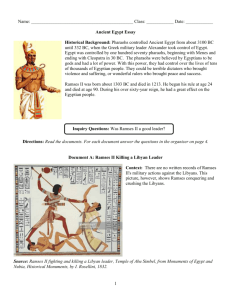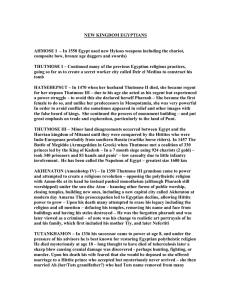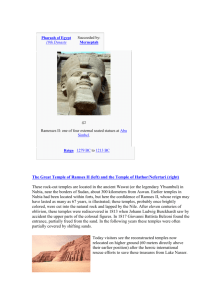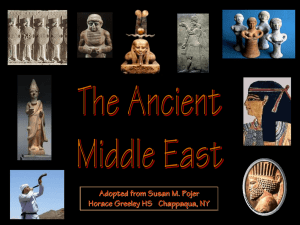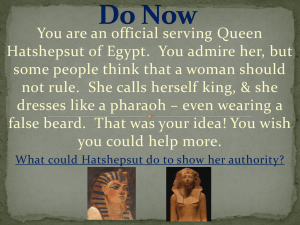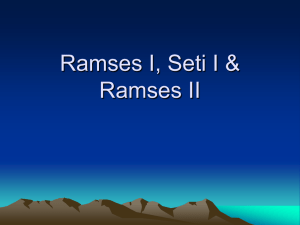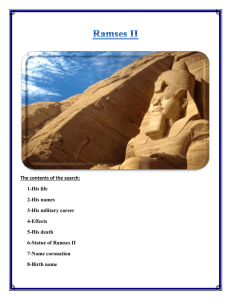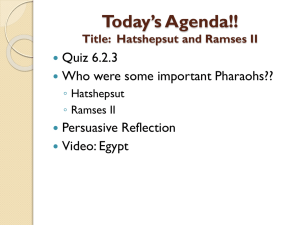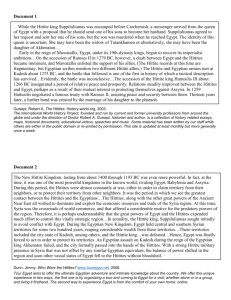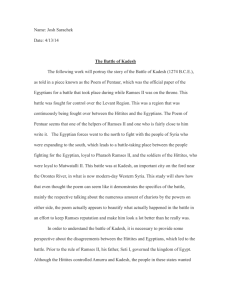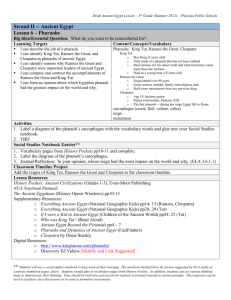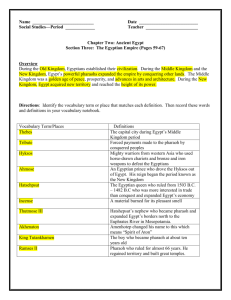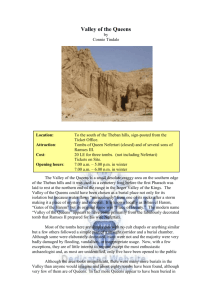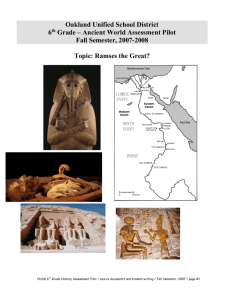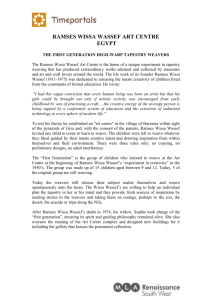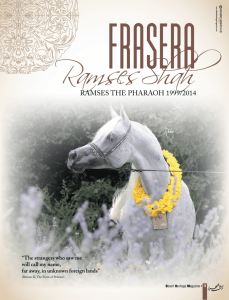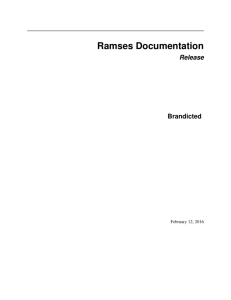Ramses the Great _part 2
advertisement
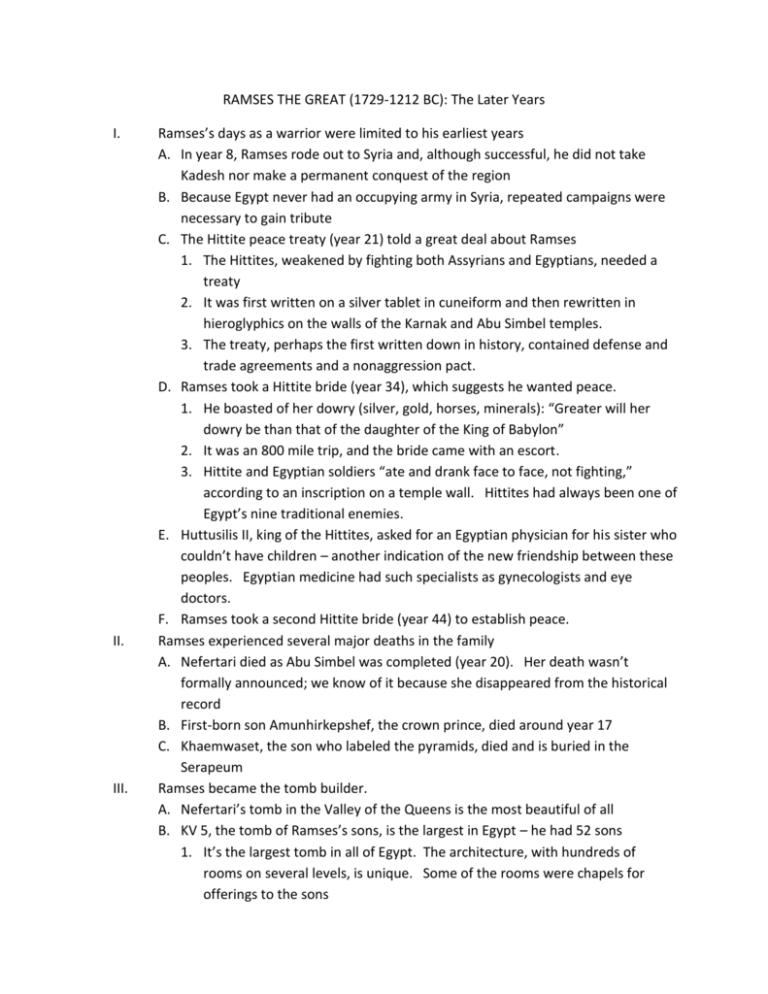
RAMSES THE GREAT (1729-1212 BC): The Later Years I. II. III. Ramses’s days as a warrior were limited to his earliest years A. In year 8, Ramses rode out to Syria and, although successful, he did not take Kadesh nor make a permanent conquest of the region B. Because Egypt never had an occupying army in Syria, repeated campaigns were necessary to gain tribute C. The Hittite peace treaty (year 21) told a great deal about Ramses 1. The Hittites, weakened by fighting both Assyrians and Egyptians, needed a treaty 2. It was first written on a silver tablet in cuneiform and then rewritten in hieroglyphics on the walls of the Karnak and Abu Simbel temples. 3. The treaty, perhaps the first written down in history, contained defense and trade agreements and a nonaggression pact. D. Ramses took a Hittite bride (year 34), which suggests he wanted peace. 1. He boasted of her dowry (silver, gold, horses, minerals): “Greater will her dowry be than that of the daughter of the King of Babylon” 2. It was an 800 mile trip, and the bride came with an escort. 3. Hittite and Egyptian soldiers “ate and drank face to face, not fighting,” according to an inscription on a temple wall. Hittites had always been one of Egypt’s nine traditional enemies. E. Huttusilis II, king of the Hittites, asked for an Egyptian physician for his sister who couldn’t have children – another indication of the new friendship between these peoples. Egyptian medicine had such specialists as gynecologists and eye doctors. F. Ramses took a second Hittite bride (year 44) to establish peace. Ramses experienced several major deaths in the family A. Nefertari died as Abu Simbel was completed (year 20). Her death wasn’t formally announced; we know of it because she disappeared from the historical record B. First-born son Amunhirkepshef, the crown prince, died around year 17 C. Khaemwaset, the son who labeled the pyramids, died and is buried in the Serapeum Ramses became the tomb builder. A. Nefertari’s tomb in the Valley of the Queens is the most beautiful of all B. KV 5, the tomb of Ramses’s sons, is the largest in Egypt – he had 52 sons 1. It’s the largest tomb in all of Egypt. The architecture, with hundreds of rooms on several levels, is unique. Some of the rooms were chapels for offerings to the sons C. Ramses’s tomb is a reflection of his greatness. 1. The workmen’s village at Deir el Medineh was supported by Ramses just to build tombs. We know more about this town than about any other ancient city in the world 2. In building a royal tomb there were two gangs, one left-handed and one right handed, working simultaneously. Bronze chisels were weighed at the beginning and end of the week so no one could steal any bronze. An entire city was erected to work on the tombs of Ramses and his sons 3. The burial chamber of Ramses the Great probably held more treasure than any other single room in antiquity
